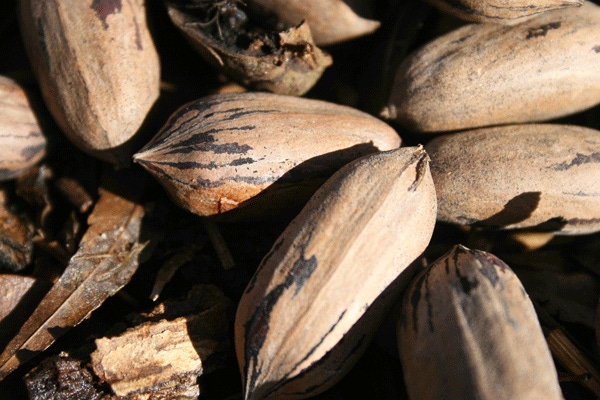July 7, 2011

Drought continues to suppress Georgia agriculture, particularly in southwest Georgia, the hub of the state’s pecan production.
It could turn what was expected to be an “on” year into an “off” one for pecan growers.
Pecan trees are alternate-bearing, meaning they produce a full crop every other year. Most trees in Georgia are on the same cycle, and this was supposed to be an on year for pecan production, said Lenny Wells, pecan specialist with the University of Georgia Cooperative Extension, based in Tifton, Ga.
Last week, Wells tested water stress in trees in orchards in Dougherty County, the center of the state’s pecan industry. What he found surprised him. “Basically, the well-irrigated trees, right now, are more stressed than the dry-land trees were last year at this time. So, even with irrigation it is hard to keep up with water demand in the tree.”
According to a June 27 report from the Georgia Agricultural Statistics Service, a third of the state’s pecan trees are in poor to very poor condition.
Crop load very light
The Stuart variety accounts for 40 percent of the 150,000 acres of pecans in Georgia. Due to drought conditions, that variety’s crop load “is very light in most areas,” he said.
The crop is now entering what is called the nut-sizing period, and the trees’ demand for water is increasing. “If we stay dry through the kernel-filling stage in September, which is the peak water demand period, we may have quality issues this year,” Wells said.
Pecan trees can tolerate more heat than a lot of other trees and plants but they have to have good soil moisture to do it. “The longer the soils remain dry and the 95-plus temperatures linger, the more that heat tolerance begins to break down,” he said.
Georgia is the top pecan-producing state. At this point, Wells figures this on year in Georgia may produce between 80 million and 85 million pounds of pecans. This is the same amount the state produced last year, which was an off year. The most the state has ever produced in one year was 150 million in 1993.
“If the trees abort some of the nuts or if they are poorly filled as a result of the drought, production could go lower this year,” he said.
The drought has helped growers in some ways. The dry conditions have hindered diseases, particularly a costly one called scab. It thrives in warm, wet weather. In some years, growers must spray fungicides as many as 15 times during the season to control it. Due to the extremely dry weather, they haven’t had to spray near as many times this year, he said.
You May Also Like




